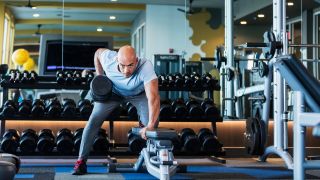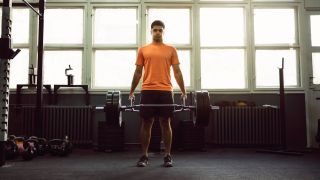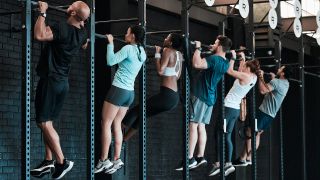
It’s easy to forget about back workouts when planning your overall routine. Many people understandably focus instead on mirror muscles like the chest, biceps and abs. However, a strong back is not only central to progressing when lifting weights, it’s also vital to staying fit and healthy in everyday life. If you’re looking to avoid sports-related niggles or the kind of chronic problems that plague deskbound workers everywhere, building a strong back should be top of your agenda. Or at least somewhere near the top.
The good news is that even if you are all about aesthetics with your gym work, a broad, strong back is going to make you look terrific in a T-shirt. The even better news is that most back exercises will also work other parts of your body, including your core and biceps.
We’re sure these two six-move sessions will convince you of the merits of training your back muscles. Each workout is made up of three supersets and they both target all the major muscle groups on your back, along with an array of other muscles.
A word of warning: both are supremely challenging sessions, something hammered home by the very first superset in workout 1, which is five sets of two different kinds of pull-ups. If that sounds beyond your ability, then we have picked out a variety of other great back workouts below you can try first, including this home back workout that uses dumbbells, and a pull-up workout plan for beginners that helps you build up to completing a perfect set of the exercise. In the meantime you can use this beginner back workout which includes assisted pull-ups.
If you’re lacking the equipment for either of those, our picks of the best dumbbells and best pull-up bars will help to rectify that. You can also browse our selection of the best back exercises for beginner, intermediate and advanced gym-goers and begin adding moves to your regular gym routine.
How To Do These Back Workouts
Both of the back workouts contain six exercises divided into three supersets. Work through a set of move 1A, take a 30-second break, and then do a set of 1B followed by a one-minute rest. Go back to exercise 1A and repeat the pattern until all the sets in the first superset are completed, then go on to the second one.
Back Workout: Session 1
These are difficult workouts with little rest, so you want to make sure you’re going into them warm to reduce the risk of injury – especially because the focus is your back, an area of the body that can be prone to niggles.
Start with some mobility work to loosen up your entire body – here’s a great warm-up routine you can do if you're not sure where to start – and then go into some workout-specific warm-ups. Begin with some shoulder, elbow and wrist movements, then do some exercises that use the same muscles as the moves in the session. Lat pull-downs using a light weight and pull-up shrugs are good options for these workouts, for example. Increase the weight used with your warm-up moves while reducing the reps until you feel primed to nail the first sets of your workout proper.
Superset 1
1A Pull-up
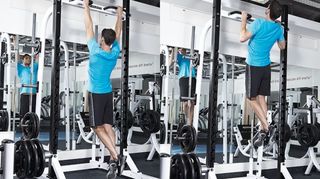
Sets 5 Reps 5 Rest 30sec
Why It’s the classic bodyweight move for a wider back.
How Hang from a bar with an overhand, shoulder-width grip. Brace your abs and glutes, engage your lats, then pull your chin up and over the bar. Pause at the top, then lower yourself back to the start under control.
- Master this essential bodyweight exercise with our guide to how to do a pull-up
1B Hammer-grip pull-up
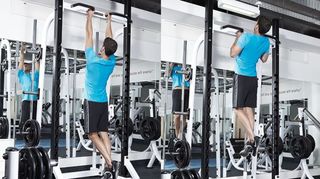
Sets 5 Reps 5 Rest 60sec
Why Changing your hand position makes the move slightly easier so you can hit your back muscles harder.
How Hang with a hands-facing, shoulder-width grip. Brace your abs and glutes, engage your lats, then pull your chin up and over the bar. Pause at the top, then lower yourself back to the start under control.
Superset 2
These two moves work well together in a back workout superset because they use the same kit and the same space, but the movement patterns are very different to work all the major muscles of your back. For the first move, focus on a quality hold at the top position to engage more muscle fibres. For the second, use a light weight to minimise the involvement of any momentum and make the target muscles move. Manage the weight through each and every rep.
2A Prone dumbbell row

Sets 4 Reps 8-10 Rest 30sec
Why It allows you to lift heavy – and hit your mid-back muscles – in safety.
How Lie chest-down on an incline bench, holding a dumbbell in each hand with palms facing. Keeping your chest against the bench, row the weights up, leading with your elbows. Pause briefly at the top, then lower the weights.
2B Prone dumbbell flye
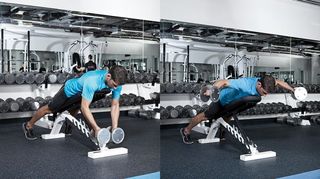
Sets 4 Reps 12-15 Rest 60sec
Why It hits your upper back as well as the back of your shoulders.
How Lie chest-down on the bench holding light dumbbells. With a slight bend in your elbows, raise the weights to shoulder height, then lower them back to the start.
Superset 3
This final back workout superset will push your already tiring muscles to the limit to break down as many muscle fibres as possible so they grow back bigger and stronger. It’s a tough end to a tough workout, but both moves also recruit the biceps, which will get in on the act to help your rapidly fatiguing back muscles get over the finish line.
3A Underhand lat pull-down
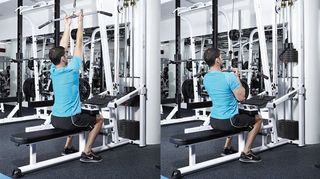
Sets 4 Reps 8-10 Rest 30sec
Why This brings your biceps into play to help out your tiring lats.
How Sit supported on the machine, holding a straight bar with an underhand shoulder-width grip. Keeping your chest up, pull the bar down to below chin height. Pause, then return to the start.
3B Seated row

Sets 4 Reps 12-15 Rest 60sec
Why It works your upper back and your biceps again help out.
How Sit at the machine holding the handle with a palms-facing grip. Keeping your chest up and your core braced, pull the handle in towards your belly button, leading with your elbows. Pause briefly then return to the start position.
Back Workout: Session 2
Warm up with 10 to 15 empty bar bent-over rows and upright rows, then gradually increase the weight on the bar – while reducing the number of reps per set – until you get to your working-set weight.
Superset 1
1A Bent-over row
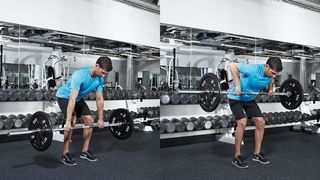
Sets 4 Reps 8 Rest 30sec
Why The classic lift for a big back.
How Hold the bar with a shoulder-width overhand grip. Hinge forwards from the hips, then row the bar towards you, leading with your elbows. Pause at the top for a one-count, then lower the bar.
- Master this essential barbell exercise with our guide to the bent-over row form
1B Upright row
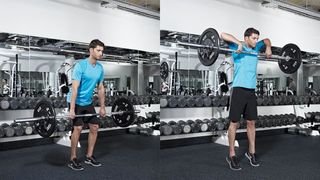
Sets 4 Reps 12 Rest 60sec
Why It hits your traps to create a wider frame.
How Stand tall with your chest up and abs and core braced, holding a barbell with a shoulder-width overhand grip. Row the bar up towards your chin, leading with your elbows. Pause at the top for a one-count, then slowly lower the bar back to the start.
Superset 2
With all back moves, it’s crucial to work the muscles to their full capacity. One of the best ways to do so is to pause at the “top” part of each rep and really squeeze the working muscles hard as they work overtime to keep the weight under control.
2A Wide-grip lat pull-down
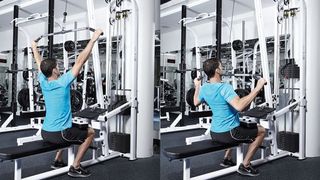
Sets 4 Reps 10 Rest 30sec
Why A wide grip works your lats more.
How Sit on the machine and take a wide overhand grip on the bar. Keeping your chest up, pull the bar down to chin level. Hold that position for a one-count, then slowly return the bar to the start, keeping tension on your lats throughout.
2B Seated cable row
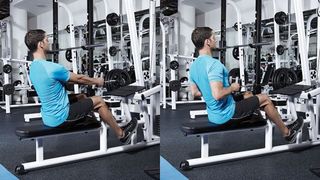
Sets 4 Reps 10 Rest 60sec
Why It works the muscles of the middle of your upper back.
How Grip the handle with both hands. Sit back and with your chest up, pull that handle towards your belly button. Pause, then return to the start position.
Superset 3
In this final two superset the two moves look similar, but you must use lighter dumbbells for move 3B. That’s because more muscles are involved in the first move, so you’re substantially stronger, whereas going too heavy on move 3B can risk damaging your shoulder joint. Prioritise good form and range of motion over weight.
3A Prone dumbbell row
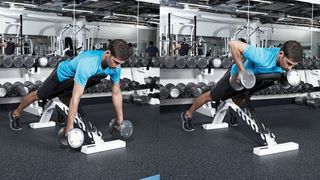
Sets 4 Reps 12 Rest 30sec
Why It works each side of your back independently.
How Lie chest-down on an incline bench holding a dumbbell in each hand. Row the weights up, leading with your elbows. Hold for a one-count at the top, then lower them slowly.
3B Prone dumbbell flye
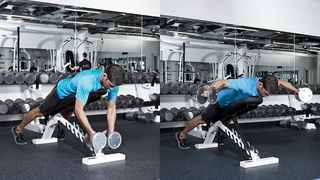
Sets 4 Reps 12 Rest 60sec
Why It’s one of the best moves for hitting the rear delts.
How Lie chest-down on an incline bench holding a light dumbbell in each hand. Keeping a slight bend in your elbows, raise the weights out to the sides until they reach shoulder height. Pause for a one-count, then lower them under control.
More Back Workouts
Home back workout
Although this workout is designed to be done with dumbbells, trainer Tom Eastham has also included variations for each of the moves that can be done with resistance bands or just your bodyweight, so you can try the session at home no matter what equipment you have. The workout will help to improve your posture and release any tightness in your back that has built up from spending too much time sitting at a computer. See the home back workout
Pull-up workout plan for beginners
If you want a fixed goal to target in your training, being able to complete a set of perfect pull-ups is a grand aim to have, and this four-week training plan will help get you there, working wonders on your back muscles along the way. You’ll need a pull-up bar and some resistance bands to assist you with your pull-ups at first. See the pull-up workout plan
Home back posture workout
This workout uses a combination of stretches and strength exercises to loosen your back muscles and improve your posture. It’s made up almost entirely of bodyweight exercises, although you’ll need a resistance band for banded rows. See the home posture workout
Upper and lower back workouts
The upper back is often neglected because people focus on the so-called mirror muscles on the front of their body, and the lower back tends to be targeted even less frequently. Needless to say, you need to work on both areas if you want to build an all-round strong and healthy body. In this article you’ll find two upper- and two lower-back workouts to add to your routine. See the upper and lower back workouts
Pull workout for a stronger back
Push yourself with this workout built around various pulling moves designed to strengthen your back muscles. After rattling through four sets of pull-ups and pull-downs, you’ll move on to two supersets to increase the challenge to your back muscles. See the back workout routine
Yoga-inspired posture workout
This bodyweight session uses yoga poses and exercises adapted from poses to help you stretch and strengthen your back, and it’s ideal for combating the effects of a sedentary lifestyle. You can do this back workout anywhere, including your office if you have a private spot or don’t mind performing a cat-cow in front of your co-workers, and it takes just a few minutes to complete all six moves. See the posture workout
Chest And Back Workouts
If you’re not training frequently enough to dedicate an entire session to your back but have moved beyond full-body workouts, chest exercises pair well with back ones so schedule one of these workouts into your week. Alternatively, following a push/pull workout plan will ensure you give your back a thorough going-over every week.
Chest and back workout
The upper back is often neglected because people focus on the so-called mirror muscles on the front of their body, and the lower back tends to be targeted even less frequently. Needless to say, you need to work on both areas if you want to build an all-round strong and healthy body. In this article you’ll find two upper- and two lower-back workouts to add to your routine. See the chest and back workout
The Tone Room’s chest and back workout
This bodyweight session uses yoga poses and exercises adapted from poses to help you stretch and strengthen your back, and it’s ideal for combating the effects of a sedentary lifestyle. You can do the workout anywhere, including your office if you have a private spot or don’t mind performing a cat-cow in front of your co-workers, and it takes just a few minutes to complete all six moves. See the Tone Room workout

Joe Warner worked for Men’s Fitness UK, which predated, and then shared a website with, Coach, from 2008 to 2013, then returned as editor of Men’s Fitness UK from 2016 to 2019.
Latest about Back Workouts

Spending Just 10 Minutes Doing These Four Pilates Moves Can Help You Avoid Back Pain
By Camilla Artault published
Give your back the mobility it needs to stay pain-free
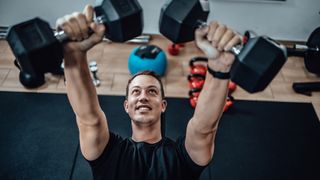
Two Chest And Back Workout Routines For More Muscle
By Nick Harris-Fry, Lucy Gornall last updated
Hit the gym for this six-move chest and back workout, which you can do as a straight sets or supersets

Strengthen Your Back And Biceps In 40 Minutes With This Five-Move Workout
By Harry Bullmore published
Build serious brawn with CrossFit star Dan Bailey’s gym session

You Need Just Four Moves And 30 Minutes To Build A Stronger Back And Shoulders
By Harry Bullmore published
Add muscle to your upper body with this free-weights routine from Kelsey Wells, the Sweat trainer with three million Instagram followers
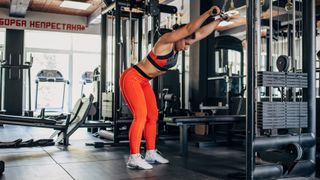
Add This Muscle-Building Superset To Your Upper-Body Routine
By Alice Porter published
Head to the cable machine to make gains on one of the gym’s unsung heroes
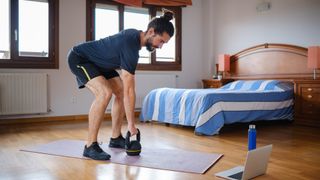
Strengthen Your Back And Improve Your Posture In Just 10 Minutes And Eight Moves
By Lois Mackenzie published
Row, row, row your kettlebell to build back muscle at home
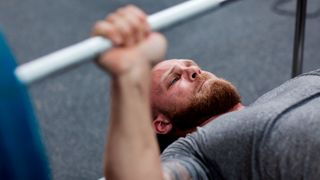
I Tried Arnold Schwarzenegger’s Two-Hour Chest And Back Workout And It Was A Wake Up Call
By Harry Bullmore published
The intensity of the session took me by surprise and made me question how I approached bodybuilding training

I’m A PT And These Are My Six Favorite Exercises To Train My Back
By Lucy Gornall published
I spend at least one day a week training the muscles in my back, and these are the moves I’ve found most effective
Get the Coach Newsletter
Sign up for workout ideas, training advice, reviews of the latest gear and more.
